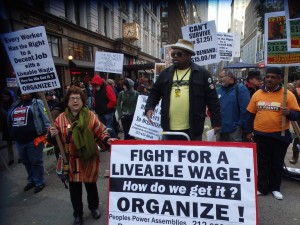I’m sure you might have seen that rather familiar commercial about the DJ posing as a financial advisor, correct? Amusing. Cute. Eye opening.
Here’s the thing, though: it’s all too realistic. I wouldn’t deny that those people across from the fake financial advisor may have been completely duped and not “actors” in the grand commercial scheme of things, because in all honesty, how do we really know that a financial advisor knows what he or she is doing professionally?
How can we actually trust the prospective financial advisor for anything from tax planning to business formation? Knowing that you could be talking to an emo, tattooed disc jockey? Well, the answer is simple:
You Ask the Prospective Financial Advisor the Correct Questions
You’re interviewing the candidate, basically. I won’t sugar-coat it. That financial advisor has a lot to prove to you. It’s your money, after all. You’re the one hiring the so-called professional. So it would make sense that you grill that candidate to the bone until there’s no meat left. You want the very best on your plate, ensuring your finances are as strong as possible, so consider these basic questions very carefully:
- Did You Like Your Coach or Mentor? — Think about it. How the financial advisor developed largely depends on whether or not the financial advisor enjoyed the field hours with the trainer back as an apprentice.
- Do You Continually Seek Additional Training? — No financial advisor knows everything every day. New trends develop, so you’ll want a professional who’s constantly researching in the know.
- How Many Clients Have You Served? — This is key, because you certainly don’t want a financial advisor who’ll just sell you and run. A good financial advisor will work with you for the long haul.
- How Long Do You Work With Your Clients? — Length of time can say a lot about a financial advisor. Just ask a marriage counselor on how that’s relevant.
 (For Referrals) Why Is Your Financial Advisor so Good? — This is a special case where you must ask the question to your best friend, aunt, uncle, mom, dad, spouse or anyone who’s referred you. More importantly, this opens the door to a wealth of other questions you can ask your referral about a particular financial advisor in question.
(For Referrals) Why Is Your Financial Advisor so Good? — This is a special case where you must ask the question to your best friend, aunt, uncle, mom, dad, spouse or anyone who’s referred you. More importantly, this opens the door to a wealth of other questions you can ask your referral about a particular financial advisor in question.- Any Clients Complain About Your Work? — Don’t be shy to ask this. You have every right to.
- Do You Use Your Products as Well? — Well, duh. After all, if the financial advisor is trying to sell you on a product, that advisor hopefully would be using the product, too.
- Do You Work With Other Colleagues, Too? — Why would this be relevant? Easy. As in what if the financial advisor gets hit by a car and dies? Pretty drastic, right?
- How Much Do You Charge? — The million dollar question of the ages. And a must-ask; here’s why.
- Are You Also a Fiduciary? — What’s a ‘fiduciary’ anyway?
- Why Do You Do What You Do? — You have to love probing questions like this, because it can yet again reveal so much just from the answer alone. Essentially, you’re trying to figure out what kind of financial planner you’re dealing with here.
- How Long Have You Been in Business? — There’s a sly trick to this question, and it’s regarding the Great Recession around 2008. Tricky, right?
- How’s Your Portfolio? — If it’s spotty, move on. If the financial advisor’s looking good, continue.
- Do You Have Certifications? — Think about it. Experience is one thing. Qualification is a whole ‘nother ballgame. Ask yourself which one you’d choose between the two: the one who’s experienced and qualified, or just experienced?
- Do You Understand What I’m Saying? — You’re a smart little cookie, aren’t you? This clever question just determines if the prospective financial advisor’s actually paying any attention to you, or just waiting for his/her turn to sell you more product. Go with the former.
- Do You Do Investments? — You’d be surprised to know that not all financial advisors are qualified to do so. So ask.
- Have You Lost Clients? — Sure, the financial planner just might lie to you. It still won’t hurt to ask (because you may have ways of finding out the truth).
- Would You Like to Meet My “Friend”? — Alias, lawyer. Attorney. Counsel. Legal representative. Yes, it’s okay to bring a “friend” along with you on your consultation with the financial advisor.
Wipe your brow of the sweat and take stock of what’s listed here. This is your ammunition. Load it all up.
Of Course, Why Would You Trust What I Have to Say About This?
I may be an expert in all this, proficient in the copywriting. But can you truly trust me? Maybe not. After all, I’m actually a tap dancer. Fooled you.
Share
Follow Us!


